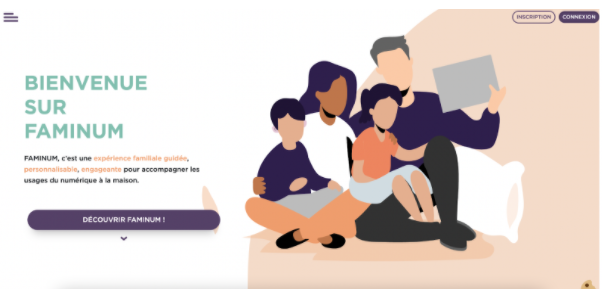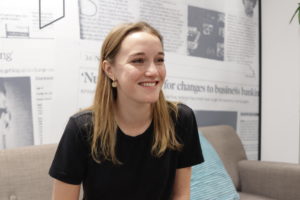Digital products and the internet are integral to much of modern life. Last year, there were 4.66 billion active internet users worldwide, representing 59.5% of the global population. However, these products and services are not always designed with the safety of users in mind. The risks of harm online can range from controlling what data services collect about us, to the kinds of content children have unfiltered access to, through to fraud and harassment.
Today is Safer Internet Day, a day used to campaign for all stakeholders to ‘make the internet a safer and better place for all, and especially for children and young people.’ Below we outline why online platforms are so adept at influencing human behaviour and showcase five projects we’ve been working on to make the internet safer for everyone
Online platforms – the ultimate choice architects
Given how much time we spend online (a staggering average of nearly 5 hours per day just on our phones), the way people make decisions online, and how this differs from ‘offline’ decision making, is a surprisingly underexplored area. Online environments tend to be highly curated and deliberately designed to encourage particular choices. In many ways, this makes online platforms and businesses the ultimate choice architects. They can help individuals and businesses to make better choices, for example banking apps can give people a simple visual representation of their bank balance to help stick to their monthly budget.
But it also comes with a darker side, especially when paired with the ability of online platforms and businesses to collect vast amounts of data and experiment on their users. For example, platforms can encourage us to choose options that share more data than we might be comfortable with, or pressure us into making a purchase with messages like ‘only 2 left, 59 people are viewing this right now’. BIT is seeking to understand these mechanisms and rebalance online environments in favour of the consumer so that our online choices are in line with our own goals and preferences.
1. Helping young people to make good online decisions
Technology has fundamentally changed the way young people grow, learn and interact. Since 2017 we have been working in Australia to support young people to behave more ethically online. Many of the ethical dilemmas that young people find themselves in online are ambiguous and it isn’t clear what the norms are. The rapid pace of technological change often leaves moral codes for new online spaces unwritten, so young people look to each other.
As part of this project, we collaborated with young people in Sydney to explore how they experience the online world and what is important to them.
The culmination of our research was the development of an 8 week in-school program called Digital Compass, which uses the power of social norms, along with other evidence based mechanisms, to support behaviour change in young people. Crucially, the program helps young people work out what they can do online instead of just telling them what they can’t, a criticism of existing programs.
2. Reducing consumers’ vulnerability to fraud online
In 2019, ~780 000 people in France (1.6% of the adult population) bought a product or service that was subsequently not delivered, did not meet claimed quality standards or led to hidden costs. In half of cases, this led to financial losses of more than €100, whilst 11% of cases led to losses of over €1000.
In an attempt to reduce consumer vulnerability to online shopping fraud, we worked with the Direction Interministérielle de la Transformation Publique (DITP, France’s modernisation department) and the Direction générale de la concurrence, de la consommation et de la répression des fraudes (DGCCRF, France’s consumer and fraud authority), to develop and evaluate an intervention to generate awareness among consumers without incurring losses.
To do this, we set up an online (you guessed it, fraudulent 😈) market simulation – DiBartolo.fr, a coffee machine manufacturer – which we promoted through Facebook ads. The site used several common fraudulent practices (‘dark patterns’) to entice consumers to make a purchase. If we had collected payments, our fake offer would have generated €150,000 in revenue in less than four weeks.

We ran an RCT, and after consumers were “scammed” they: 1) were told they would be contacted shortly to gather payment (control group); 2) were told they were about to be scammed and to be more careful next time (teachable moment); or 3) were told they were about to be scammed and given rules of thumb training on how to detect fraudulent offers in future (rules of thumb).
To evaluate whether our interventions had an effect, we later re-targeted the target sample with a new fraudulent offer. Whilst our sample was too small to draw statistically significant conclusions, our results indicate encouraging directional effects on reducing consumers’ vulnerability to fall for a future scam.
Read the final report (in French!)
3. Helping families control their screen use at home
Over the last few years, children’s screen time has grown exponentially across the world – a phenomenon that was only accelerated by the pandemic. Yet despite the enormous benefits of access to these new technologies, the evidence on the impact of this is still nascent with growing concerns about the potentially harmful effects of screens for children, including their physical and mental health, cognitive development and online safety.
Since 2019, we have assisted the Direction Interministérielle de la Transformation Publique and the Mission interministérielle de lutte contre les drogues et les conduites addictives (MILDECA, France’s interministerial mission on drugs and addiction) – on a project to help families in France have a healthier relationship with screens.
With a focus on children aged 6-11, we conducted an exploratory project to understand how families currently approach screens at home and the barriers they faced to a ‘healthy’ screen use. Parents told us that they often felt overwhelmed with information on the dangers linked to screens, but also felt both ill-equipped and unsupported when it came to how to best support and regulate their children’s use of screens.
Together with DITP and MILDECA, we developed, in partnership with the digital education company Tralalere, a digital family mediation tool – Faminum. This tool provides information and support to parents, and guides them to create a personalised strategy to better manage screens at home. The tool is being launched today in France, with results from a small evaluation pilot expected in the coming weeks – watch this space!

4. Empowering users to make active choices
In 2020-21, we worked with the Centre for Data Ethics and Innovation (CDEI) in the UK to explore how to create ‘active’ choices; choices where individual users are empowered to better control how they use digital products and services.
Here we tested the participants’ ability to make informed choices about their privacy and personalisation settings using new user designs prototypes for smartphone, web browser and social media contexts.
This project sought to generate ideas that inspire and provoke change through proof-of-concept. For example, simplified and bundled privacy settings made it easier for consumers to make the changes they wanted. We recommend that active choice should be prioritised in online environments rather than passive consent, and the complexity of these active choices should be minimised.
5. Reducing online gambling harm
The 2018 Health Survey for England estimated that over 1.75 million people could be classed as ‘at-risk gamblers’. In September 2021 BIT launched the Gambling Policy and Research Unit, a dedicated team of specialists with a mandate to develop and rigorously test methods and approaches to significantly reduce gambling harms.
Our vision for the Gambling Policy & Research Unit is to make the UK gambling market the most safely regulated in the world. Much of the work of the GPRU will consider how to make online gambling environments safer for people.
Our ongoing commitment to gambling work builds on previous work on gambling including Improving the uptake of gambling management tools by identifying and reducing the friction typically associated with accessing them and demonstrating that removing high anchors often found with deposit limits leads customers to set lower limits.
In the near future we are looking forward to publishing the results of more ongoing work from the GPRU about reducing harm in online gambling.






